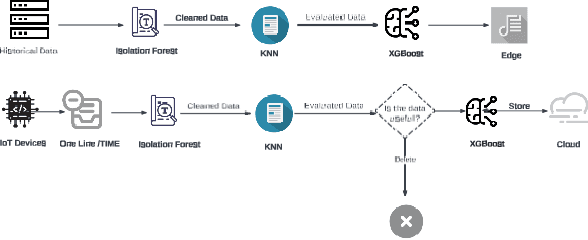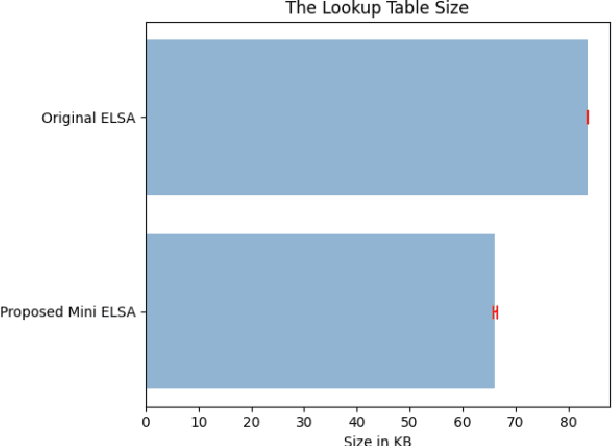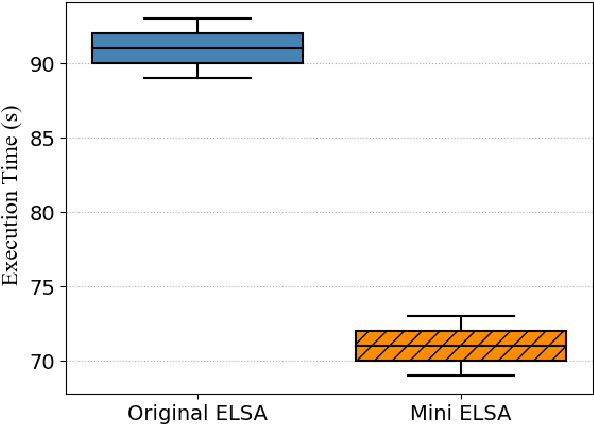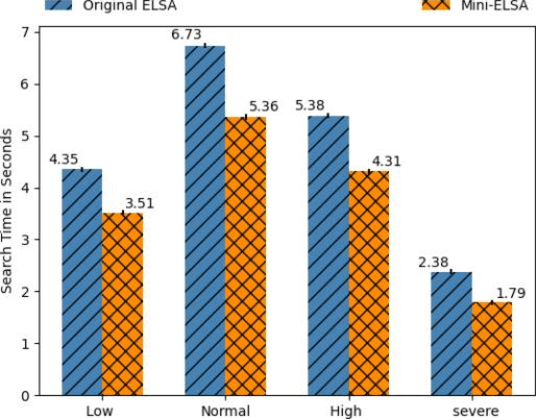Jeremy Singer
Quantitative Analysis of Deeply Quantized Tiny Neural Networks Robust to Adversarial Attacks
Mar 12, 2025Abstract:Reducing the memory footprint of Machine Learning (ML) models, especially Deep Neural Networks (DNNs), is imperative to facilitate their deployment on resource-constrained edge devices. However, a notable drawback of DNN models lies in their susceptibility to adversarial attacks, wherein minor input perturbations can deceive them. A primary challenge revolves around the development of accurate, resilient, and compact DNN models suitable for deployment on resource-constrained edge devices. This paper presents the outcomes of a compact DNN model that exhibits resilience against both black-box and white-box adversarial attacks. This work has achieved this resilience through training with the QKeras quantization-aware training framework. The study explores the potential of QKeras and an adversarial robustness technique, Jacobian Regularization (JR), to co-optimize the DNN architecture through per-layer JR methodology. As a result, this paper has devised a DNN model employing this co-optimization strategy based on Stochastic Ternary Quantization (STQ). Its performance was compared against existing DNN models in the face of various white-box and black-box attacks. The experimental findings revealed that, the proposed DNN model had small footprint and on average, it exhibited better performance than Quanos and DS-CNN MLCommons/TinyML (MLC/T) benchmarks when challenged with white-box and black-box attacks, respectively, on the CIFAR-10 image and Google Speech Commands audio datasets.
Reinforcement learning guided fuzz testing for a browser's HTML rendering engine
Jul 27, 2023Abstract:Generation-based fuzz testing can uncover various bugs and security vulnerabilities. However, compared to mutation-based fuzz testing, it takes much longer to develop a well-balanced generator that produces good test cases and decides where to break the underlying structure to exercise new code paths. We propose a novel approach to combine a trained test case generator deep learning model with a double deep Q-network (DDQN) for the first time. The DDQN guides test case creation based on a code coverage signal. Our approach improves the code coverage performance of the underlying generator model by up to 18.5\% for the Firefox HTML rendering engine compared to the baseline grammar based fuzzer.
Improving Robustness Against Adversarial Attacks with Deeply Quantized Neural Networks
Apr 25, 2023



Abstract:Reducing the memory footprint of Machine Learning (ML) models, particularly Deep Neural Networks (DNNs), is essential to enable their deployment into resource-constrained tiny devices. However, a disadvantage of DNN models is their vulnerability to adversarial attacks, as they can be fooled by adding slight perturbations to the inputs. Therefore, the challenge is how to create accurate, robust, and tiny DNN models deployable on resource-constrained embedded devices. This paper reports the results of devising a tiny DNN model, robust to adversarial black and white box attacks, trained with an automatic quantizationaware training framework, i.e. QKeras, with deep quantization loss accounted in the learning loop, thereby making the designed DNNs more accurate for deployment on tiny devices. We investigated how QKeras and an adversarial robustness technique, Jacobian Regularization (JR), can provide a co-optimization strategy by exploiting the DNN topology and the per layer JR approach to produce robust yet tiny deeply quantized DNN models. As a result, a new DNN model implementing this cooptimization strategy was conceived, developed and tested on three datasets containing both images and audio inputs, as well as compared its performance with existing benchmarks against various white-box and black-box attacks. Experimental results demonstrated that on average our proposed DNN model resulted in 8.3% and 79.5% higher accuracy than MLCommons/Tiny benchmarks in the presence of white-box and black-box attacks on the CIFAR-10 image dataset and a subset of the Google Speech Commands audio dataset respectively. It was also 6.5% more accurate for black-box attacks on the SVHN image dataset.
mini-ELSA: using Machine Learning to improve space efficiency in Edge Lightweight Searchable Attribute-based encryption for Industry 4.0
Sep 22, 2022



Abstract:In previous work a novel Edge Lightweight Searchable Attribute-based encryption (ELSA) method was proposed to support Industry 4.0 and specifically Industrial Internet of Things applications. In this paper, we aim to improve ELSA by minimising the lookup table size and summarising the data records by integrating Machine Learning (ML) methods suitable for execution at the edge. This integration will eliminate records of unnecessary data by evaluating added value to further processing. Thus, resulting in the minimization of both the lookup table size, the cloud storage and the network traffic taking full advantage of the edge architecture benefits. We demonstrate our mini-ELSA expanded method on a well-known power plant dataset. Our results demonstrate a reduction of storage requirements by 21% while improving execution time by 1.27x.
 Add to Chrome
Add to Chrome Add to Firefox
Add to Firefox Add to Edge
Add to Edge